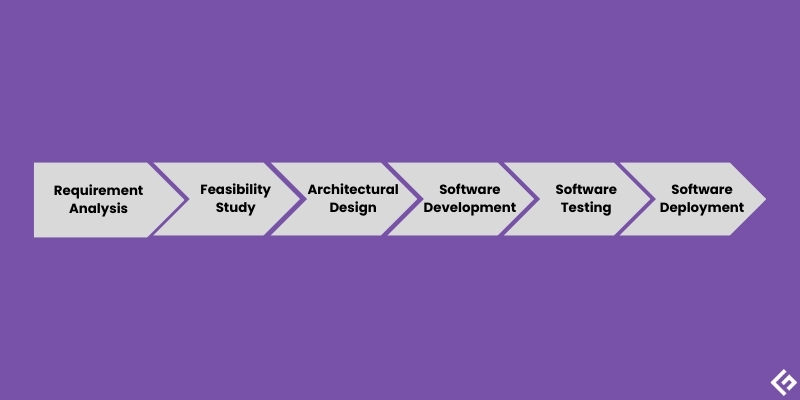Test data management (TDM) is a process of planning, managing, designing, storing, and retrieving accurate test data. It plays a crucial role for software testing teams throughout the software development lifecycle (SDLC) to ensure efficiency, accuracy, and compliance.
Testing software during the development process helps organizations validate the application’s performance, functionality, compliance, and security. It also provides an opportunity to identify and fix defects and bugs before releasing the product to the market. However, the complete testing of a product is only possible if the teams have access to relevant and sufficient test data.
In practice, manual generation and maintenance of test data are challenging; hence, there is a need for test data management (TDM) practices. TDM practices help software companies improve development speed, compliance, and product quality by providing timely, accurate, and relevant data for performance testing and troubleshooting code.
Now, let’s understand test data management in detail.
- Understanding Test Data Management
- Importance of Test Data Management
- Key Challenges in Test Data Management
- Process of Test Data Management
- Differences between Real Production and Testing Environments
- Best Practices for Effective Test Data Management
- Popular Test Data Management Tools in the Market
- FAQs
Understanding Test Data Management
Test Data Management ensures that applications are evaluated accurately by providing data sets that closely mimic real-world conditions. This approach is essential for testing how the application will behave in production, as TDM facilitates the creation or procurement of data sets that are almost identical to those in real-world scenarios.
Test data management depends on the requirements, and processes may vary from one organization to the other. However, the result is to support effective and reliable testing of applications and features, identify and address malfunctions, and enable development teams to develop and deliver reliable software faster.
Software developers are increasingly looking for ways to improve the quality of their products while addressing their customers’ rapidly changing business goals. However, even when they need to deliver products quickly, they must test the applications and ensure they are efficient and reliable.

Providing accurate and timely data to the testing teams helps to improve the development speed, application quality, compliance, and reliability. Additionally, it ensures access to the relevant data for validation, automated testing, and troubleshooting of the applications.
Besides the testing speed, the management process reduces production costs significantly.
Importance of Test Data Management
The objective of managing test data is to improve the efficiency and outcome of the testing processes and, consequently, the quality of the application. The testing process may most often require different types and large amounts of data. To this end, organizations should ensure that relevant data is available for each test, mask sensitive information, and store and maintain the data for future use.
Test data management improves the quality of the test data, ensuring accuracy and effective application testing processes. Consequently, an organization can develop, test, and release reliable software products much faster and at lower costs.
Additionally, the organization saves on CPU, storage, and network resources since the data is reusable, and once created and formatted, it requires less processing power and movement.
The benefits of test data management are outlined below.
Improved Software Quality
TDM allows testing teams to quickly access and use accurate testing data representing real-world conditions. Consequently, they can perform complete testing and fix bugs before releasing the software to the market.
Finding and Fixing Bugs Earlier

When TDM delivers accurate test data on time, teams can perform complete application quality testing. This allows them to find and fix bugs early, when it is cheaper, instead of addressing them after delivering the product to the market. Reliable products delivered on time increase revenues and customer trust levels.
Accurate and Reliable Test Data
The TDM processes practices allow organizations to allocate relevant test data throughout different stages of the software development lifecycle. Consequently, teams can access and test new products, features, or codes faster and hence get the opportunity to address any defects before shipping products. Having good test data also ensures continuous testing and complete and reliable evaluation of the product, hence minimal or no bugs when pushed to production.
Reduced Data Redundancy, Storage Requirements and Cost
One aspect of TDM is sorting out data and making common data accessible to all teams. Sharing common production data eliminates the need for teams to store and maintain multiple copies of the same data, which saves on storage space requirements, associated overheads, and costs.
Improved Compliance
The TDM processes help organizations securely use test data that closely resembles real production data but does not contain private or sensitive information.

It helps software development companies comply with data privacy regulations such as GDPR, HIPAA, CCPA, PCI, etc. Most management tools come with privacy features that administrators can use to mask sensitive data before the testing processes. As such, organizations can use production data without exposing sensitive private information and violating privacy rules.
Reduced Redundant Tasks
Implementing good TDM practices helps to identify and address redundant tasks. It analyses each team’s requirements and can minimize cases where teams have common tasks and data. Consequently, this helps to save on costs and resources.
Additionally, you might have features that you can test with production data. In this case, you do not have to generate the test data afresh since you already have the production data in place.
Key Challenges in Test Data Management
Key challenges in test data management include the lack of relevant test data, ensuring data accuracy, managing sensitive data, and complying with data privacy and other regulations.
Others include slow testing environment creation and maintenance, incompatible tools, lack of automation testing for some processes, and inability to provision the right data for different test environments.
Redundant Data and High Storage Costs
Teams most often create several copies of the same data, which results in redundancy and more storage space requirements and costs.

Organizations can reduce storage inefficiency by enabling teams to collaborate and use centralized storage, where they access common tests instead of creating and storing multiple copies of the same information.
Inaccurate or Out-Of-Date Test Data
As teams continue to add or modify features and code, they may not have access to the relevant and current data. Instead, they may only have large amounts of irrelevant data that cannot meet their current or updated testing requirements.
Using test data that does not represent real-world conditions does not deliver the best test results. Poor quality may range from inadequate details to bad formats, wrong types, and inadequate amounts.
Insufficient Data
Ideally, you need to test the application with sufficient data, as expected in the production environment. While there is not much available data, you could use automated software to create more similar data that represents a real-world use case. Otherwise, if you test software with only a little data, you won’t determine what will happen when there are large volumes of data in the production environment.
Inadequate Data Security
In some organizations, there are risks of internal and external data breaches. Unhappy employees may access production data and misuse it, especially if it contains sensitive information.

Besides internal risks, cybercriminals may access the data, compromise it, or steal it and use it to their advantage.
Masking Data Adds Cost and Time To Deliver
To comply with various data privacy regulations, organizations must anonymize or mask sensitive data, such as credit card numbers, bank account numbers, financial transactions, patient records, and other sensitive information. However, this adds to the overheads since the organizations must invest in the right tools. Additionally, it is a complex and lengthy process and may take a week to analyze and mask the data.
Process of Test Data Management
There are several phases in test data management, but these may vary according to the organization and requirements. However, key processes include planning, analyzing, designing, building, and maintaining test data.
Effective software test data management includes creating, modifying, storing, backing, maintaining quality data, and provisioning to respective test environments throughout the testing lifecycle. It should also protect sensitive information and ensure reusability.
Key phases of the TDM
- Planning: The planning stage is where the team defines the types, formats, and amount of data they require to test the different features.
- Creating the test data: There are different types of test data. This includes the production data, which represents a real-world business case scenario. However, due to privacy issues, sensitive information must be anonymized or masked. Besides, synthetic data or any other type that mimics a real-world scenario may be generated.
- Management: This involves organizing the data, storing it, and maintaining it to ensure integrity, accuracy, and availability throughout the testing cycle.
- Protecting test data: This stage involves protecting all data from security breaches and masking private, sensitive information. It ensures that the data is secure and that it complies with data privacy regulations.
Differences between Real Production and Testing Environments
The differences between production and testing environments are outlined below.
| Feature | Testing Environment | Production Environment |
|---|---|---|
| Access | Access is restricted to a controlled group within the organization and is not accessible by the general public. | Open to intended users, whether they are internal to an organization or the general public. |
| Data Use | No real-world data, sensitive data anonymized | Utilizes real-world data for live interactions |
| Main Purpose | Designed to verify functionality, identify bugs, and ensure software meets quality standards before release | Run live application for end-user interaction after software has been tested and deemed bug-free |
| Environment | Isolated and controlled environment for developers and QA teams | The real environment is where the software is finally deployed and accessible by the end-user base. |
| Tools | Software testing and debugging tools | Deployment, orchestration, monitoring, logging, and load-balancing tools |
| Stability | Less stable and may malfunction when under heavy load. | More stable, scalable, and reliable with minimal or no disruptions regardless of load. |
Best Practices for Effective Test Data Management
Streamlining the test data management helps to improve the overall testing processes and quality of the end product. A well-planned test data management strategy is critical in ensuring the success of your testing efforts and producing quality products.
Ideally, it should outline how to handle the test data by creating, masking, storing, provisioning, and maintaining it. Other areas it should cover include how the testing, developer, and data expert teams collaborate to ensure that test data is relevant to the code under evaluation and represents real-world conditions.
Besides these, other best practices are outlined below.
Analyze The Test Requirements
Before finalizing the test data, you should analyze the requirements to perform a complete test. Ideally, you must capture all the data sets required to perform a particular test. The test data management should identify and document each of the data elements for each feature or piece of code.
Establish A Good Data Discovery Method
The data discovery process helps to identify the appropriate data for each test scenario. This involves analyzing the type and sources of data the application requires. It also checks the data dependencies. Making correct data discovery ensures that the tools will pick the right data appropriate for the test environments and closely resembling the production data.
Refresh and Maintain the Central Repository
Refreshing the test data helps to maintain its relevance, hence the ability to meet current testing requirements, new features, and updates. As the software evolves, some data may become stale and irrelevant. This will deliver the wrong results and prevent teams from finding and addressing bugs. Perform regular data refreshing to keep up with requirements.
With time, some data becomes redundant or obsolete and will require removal to improve storage efficiency. Other than releasing space, removing unnecessary data makes it easier and faster to fetch the relevant test data.
Identify the Type, Format, and Amount of Data Suitable for Each Test
Teams need to define the data required to test each piece of code and for each anticipated scenario. Most tests will require both static and dynamic data. Teams should, therefore, identify data that does not change and can be reused. As organizations continue to embrace shift-left testing, TDM should ensure that relevant data is available throughout the SDLC, including during the early stages.
Isolate and Secure Data
Secure the data and ensure only authorized people have access to the sensitive information. For testing applications purposes, mask all the sensitive information to avoid violating the data privacy rules.
Additionally, you should isolate the real and test data to avoid data breaches or compliance violations. Allow only a few members access to the real data; otherwise, mask the sensitive information before using the data for testing purposes.
To avoid loss of test data, it is also important to back it up regularly. You can follow the data backup best practices to ensure the security and integrity of your test data.
Mask Sensitive Data
To protect sensitive information, teams can mask the data but retain its structure and format, mimicking real-world scenarios. Ideally, the data retains the properties of real-world conditions but does not contain sensitive information.
Popular Test Data Management Tools in the Market
Organizations require reliable test data management tools to ensure data accuracy and integrity. The tools are software applications that enable teams to perform functions such as importing different types of data from multiple sources, conditioning the data, and making it available throughout the development lifecycle.
The best test data management tools are outlined below.
- Broadcom Test Manager: The TDM tool simplifies the process of creating, managing, and provisioning test data.
- Datprof: Datprof is an effective TDP platform that provides functions such as generating synthetic test data, subsetting, masking, cloning, and more.
- Delphix Test Data Management: This tool provides secure, self-service access to test data to different teams while ensuring compliance and reducing storage requirements and costs.
FAQs
Different types of test data enable teams to test the application’s various capabilities. These include valid, invalid, boundary data, and each test.
1. Valid test data: This is the right data, almost similar to real-world conditions. It helps to test how the application responds to real-world scenarios.
2. Invalid test data: This type enables teams to perform negative testing activities and determine how the application behaves when the input does not meet the set conditions.
3. Boundary data types: This type of data helps to test how the application will behave when the data is at the boundary or the defined limits.
Key skills required for test data management are outlined below.
1. Good knowledge of TDM tools, AI-powered testing, and the use of other testing tools.
Good software engineering skills and knowledge of programming languages such as Java, Scala, C.
2. Knowledge of automation tools such as UIPath, Selenium, and others.
3. Skills in data storage and management solutions, such as database technologies like Teradata, Hadoop, SQL server, big data, data-driven testing, etc.
4. Understanding of data privacy regulations and masking techniques.
Follow test data management best practices, such as automating, ensuring data relevance, anonymizing, and reusing test data. Additionally, encourage collaboration between the developer, operator, testers, and QA teams to streamline the entire testing process.
Final Words
Software testing is a critical step that ensures reliability and that the application features will operate as designed before being released to the market. It also helps developers address bugs in the software when it is cheaper and more convenient. However, reliable and quality testing is only possible when there is sufficient, relevant, and accurate test data.
One best practice is to use test data management (TDM) to generate, condition, store, and maintain the test data. The TDM ensures that the test data is accurate, secure, compliant, suitable, and relevant to the specific testing requirements. Consequently, this enables teams to perform complete testing, validate functionality, and identify and address defects before shipping the software to end users.

